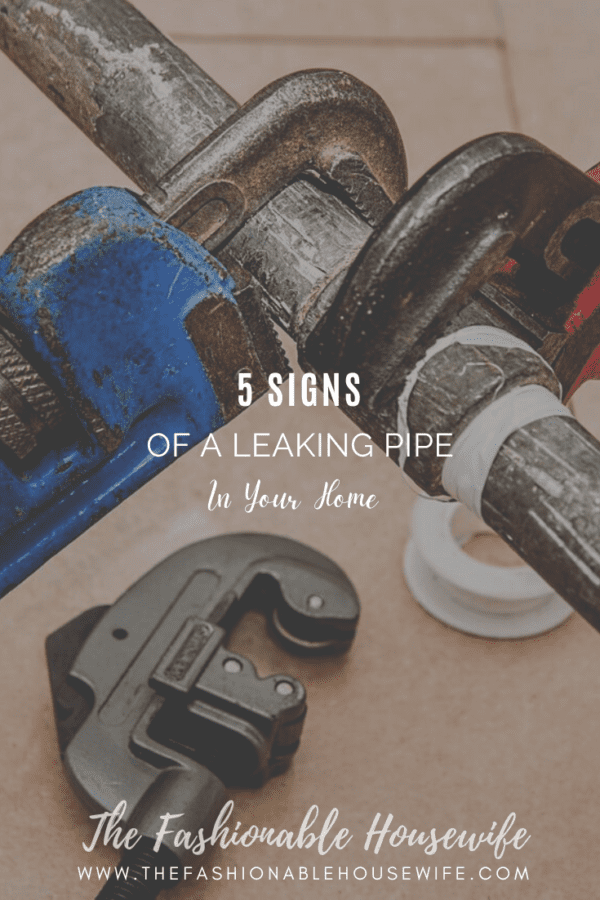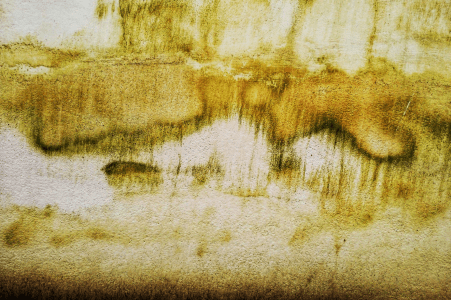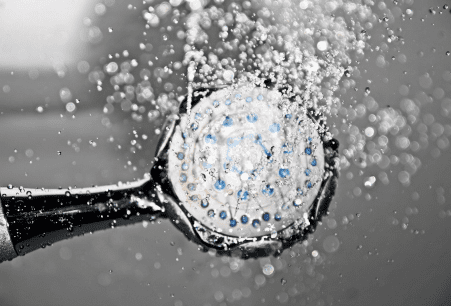
When it comes to plumbing problems in the home, many – such as a blocked drain, or a tap that won’t shut off – will present themselves almost immediately. These problems are the equivalent of someone making a grand entrance at a big function or event; they’ll certainly let you know they are there. In many cases these problems can be addressed relatively easily and quickly.
Other plumbing problems such as leaking pipes can be more insidious, and only make the extent of their damage known when it’s too late. They’re like the gatecrasher at the same party, one who slips in through the side door and only makes their presence felt later in the night. Not always easy to get rid of, but it is possible.
Leaking pipes may not always be immediately obvious as they’re typically hidden behind walls, or in harder to spot areas of the home. Nevertheless, there are numerous identifiable signs that you may have a leaking pipe in your home. Let’s take a look at five of them.
Discoloration on the walls
Check the walls of rooms that have plumbing access, such as the kitchen, bathroom and laundry. Notice any stains forming on those walls? Perhaps the paint is bubbling or the wallpaper is peeling? It is possible that you may have a pipe that is leaking in those particular areas where there is water damage. It is possible for humidity to cause discoloration or stains to the walls of your home. But it is certainly advisable to keep a close eye on it and consult a licensed plumber if you believe that leaking pipes may be the cause.
Mold on the walls
In rooms of high humidity, such as the bathroom, it is entirely possible to find occasional mold in even the cleanest and hygienic of houses. However, finding mold on walls of rooms in the home that you would not expect to find, could be a sign of leaking pipes. You might also notice mold or mildew growing on the ceiling or floors of your home. Mold flourishes in humidity, and a leaking pipe provides the perfect conditions for mold and mildew to grow. If you have wooden floorboards throughout your home, you might also find that the moisture from a leaking pipe might warp those floorboards.

Stale, musty odors
There is a strong possibility that you will smell the result of a leaking pipe before you actually see it. When water from a leaky pipe pools and lies stagnant for an extended period of time, it gets stale and produces a dank, musty odor that can be smelled throughout the home. That smell may be telling you that mold is forming where the leak has occurred, often
behind the walls or beneath the floor. Under normal circumstances, no well-ventilated room in the house should have an overpowering, moldy smell. If there is one, it is likely because of a leaking pipe and should therefore be inspected by a licensed plumbing contractor.
Lower than usual water pressure
Have you noticed that the water coming from your tap or shower head doesn’t quite have the same pressure that you’re used to? That it barely provides more than a trickle, even when you try to increase the pressure? It’s highly likely that a leak in the pipe is resulting in the water escaping through a crack or fracture, which means that it is not reaching the fixture at the volume you were expecting. There may be other issues that have resulted in the water pressure decrease you’re experiencing. However, it is certainly worthwhile to consider investigating the current state of your plumbing pipes and determining whether a leak is the cause of your problem.

Water bills have increased for no obvious reason
If your water bills are generally pretty consistent over each monthly or quarterly billing cycle, and then the next one shows an unexpected increase, a leaky pipe may be the cause. Sure, you might find yourself using more water than normal in one period, and that will be reflected
in your bill. However, if you believe your water usage has been consistent with previous periods yet your water bill shows a surprising spike, it may be water that has been lost due
to a leak. Have your pipes inspected and, if there is a leak, take the necessary course of action to ensure your next water bill comes back to a more familiar figure.
To reiterate…
The average Australian home can waste a lot of water due to problems such as dripping taps and leaking pipes. According to Queensland’s Department of Environment, Land, and Water, a single dripping tap can waste up to 9000 liters of water in a year. A noticeably leaking toilet? That can waste upwards of 60000 liters of water that you’ll end up paying for.
Leaking pipes are certainly a problem for any home, but more often than not they’re not always a problem that becomes immediately apparent. They can be a bit of a slow burn, working away in the background, hidden from view until their presence is felt seemingly from out of nowhere.
There are numerous ways to identify a potential leak though, so you can take the necessary action before it’s too late. Five possible signs of a leaking pipe in your home include:
- Patches of discoloration on the walls
- Mould growing on the walls, ceiling, or floors
- Unpleasant, musty smells caused by mold growth
- A significant decrease in water pressure
- An unexpected increase in water bills
If you notice any of these in your home, get in touch with a licensed plumber as soon as possible. They will be able to determine whether a leaking pipe is the cause of your problem, and guide you towards the best solution to have the problem fixed.



